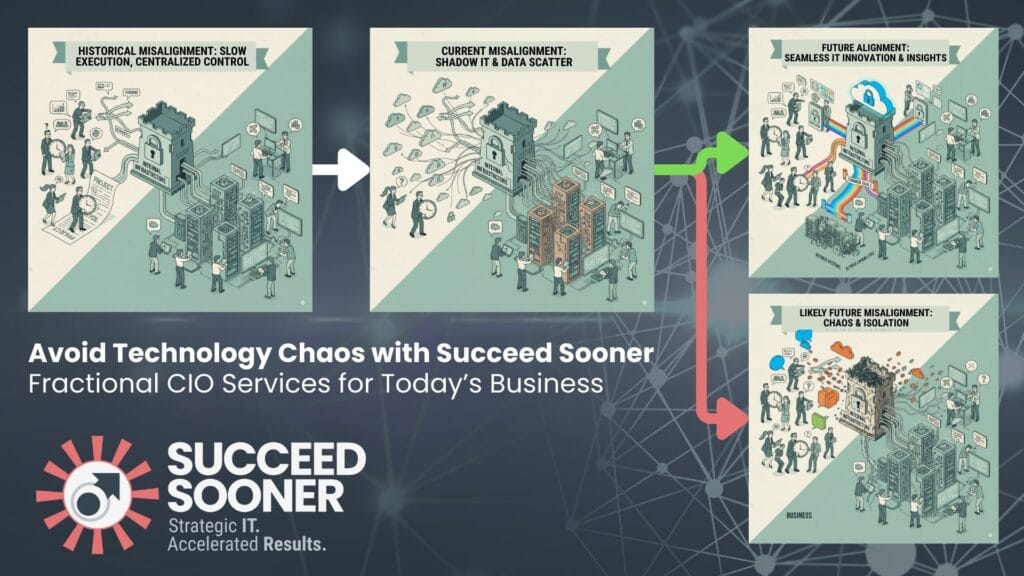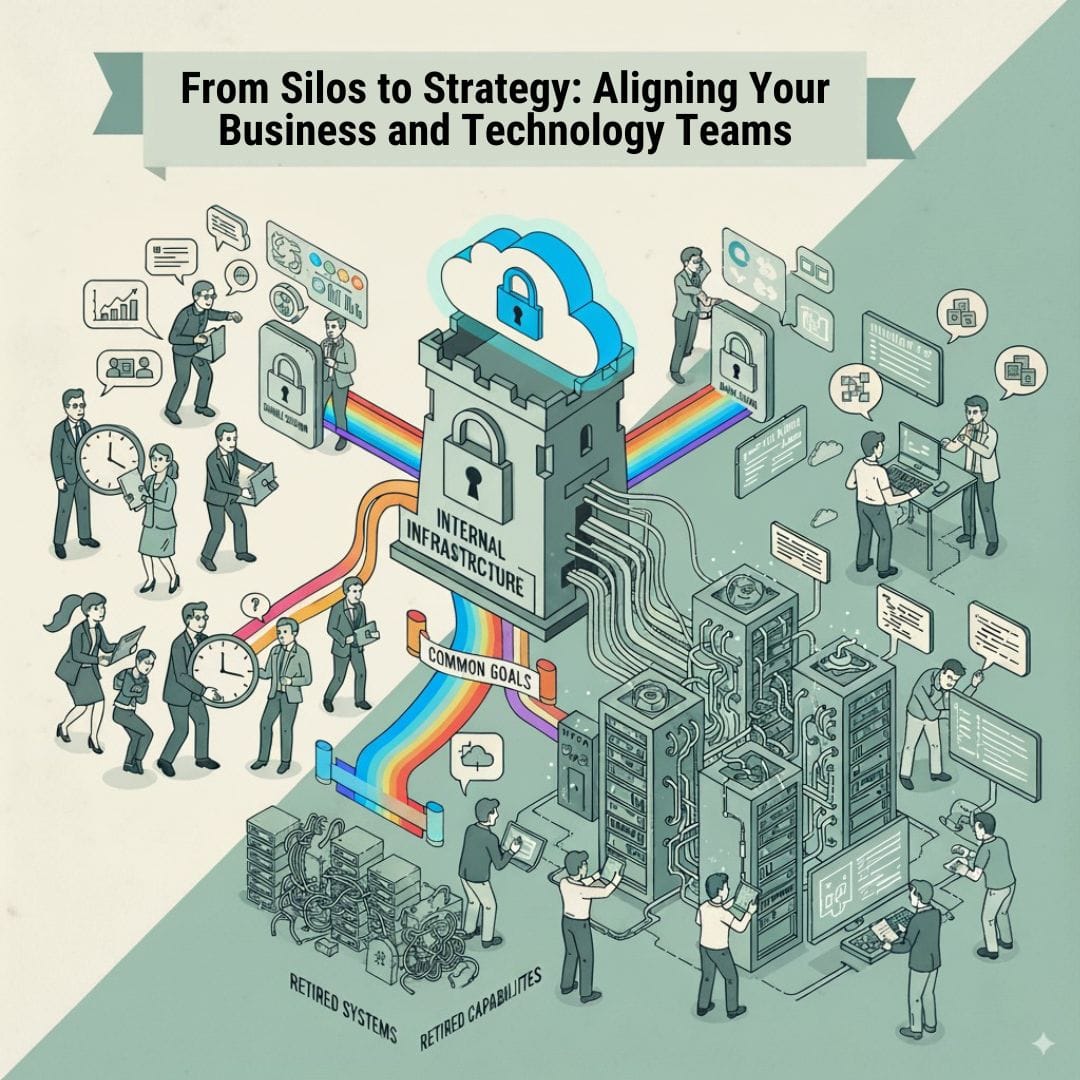In many organizations, the relationship between business operations and technology execution has been complex. This dynamic started as a centralized, “order-taker” model which as time went on felt slow and inefficient. Since then, despite the promise of new technologies and providers, it has evolved into something often far less efficient. Today, most organizations are at a critical juncture: they can endure growing fragmentation, or they can strategically align their teams to unlock business technology alignment and accelerated results.
The Journey of a Disconnected Organization
Decades ago, technology functioned as a centralized utility. The IT department served as the gatekeeper, managing all infrastructure and providing solutions only upon the business’s request. This model certainly maintained high security standards and centralized control. However, it often resulted in slow project execution and a distinct lack of agility. Gaps in language and understanding also meant that solutions didn’t always deliver the business value that was desired. Consequently, business units became frustrated, feeling constrained by a single technology provider.
The landscape shifted completely with the emergence of cloud-based Software-as-a-Service (SaaS). These accessible technologies liberated business teams from the confines of IT. They began finding and implementing their own solutions easily. While this fostered rapid innovation in some pockets, it unfortunately introduced a new set of challenges:
- Shadow IT: Uncontrolled technology purchases led to fragmented ecosystems and data silos.
- Duplicate Efforts: Different teams purchased similar solutions, resulting in redundant systems and wasted budget.
- Data Scatter: Critical business data is now scattered across multiple platforms. Therefore, gaining a holistic view or leveraging insights for data-driven decision-making becomes extremely difficult.
This disconnect represents more than just an operational nuisance; it carries a significant financial cost. It creates technical debt because aging systems demand more resources for simple maintenance. It also introduces major security risks since unmonitored systems create vulnerabilities. Most critically, this fragmentation stalls innovation, effectively preventing the business from executing its strategy effectively.

The Future Awaits: Accelerated Results Through Alignment
Fortunately, this disconnected state is not inevitable. Organizations can intentionally build bridges between business and technology. By doing so, they move toward a future defined by seamless innovation and accelerated results.
Imagine a state where business and technology teams share a common vision and collaborate from the very outset. In this strategically aligned model, technology acts as a strategic partner, not merely a support function. This collaboration yields powerful outcomes:
- Strategic Investment: Focused investment in core platforms eliminates redundant systems and significantly improves return on investment (ROI).
- Reduced Risk: A common set of security controls and standards protects the entire organization proactively.
- Empowered Teams: Business and technology teams work better together, making smarter decisions and driving innovation with speed.
This transformation is about much more than efficiency; it is about building a resilient, adaptable, and forward-looking organization ready to meet market demands.
Ready to Begin Your Business Technology Alignment Journey?
This organizational shift can feel daunting, but you do not need to tackle it all at once. Organizations can begin their alignment journey with a phased, strategic approach. Specifically, you can start with a focused “quick wins” initiative or a more comprehensive, multi-year strategic plan. The key, however, is to take that first decisive step toward bridging the gap and unlocking your organization’s full potential.
What’s Next
Organizational fragmentation costs capital, wastes time, and significantly increases risk. Furthermore, technology is now central to virtually every business outcome, meaning misalignment directly threatens your ability to Succeed Sooner.
Strategic alignment is not just an IT project; it is an organizational imperative for executive leadership. It requires moving from a reactive, fragmented state to a proactive, unified strategy. It requires strategic Fractional CIO leadership that can speak both the languages of your business and IT. Business technology alignment will not happen naturally, it requires leadership and attention.
Is your organization struggling with Shadow IT, data scatter, or stalled innovation? If you need a proven partner to help your executive team define and execute a strategy that harmonizes business objectives and technology capabilities, let’s connect with Succeed Sooner Consulting.


Leave a Reply